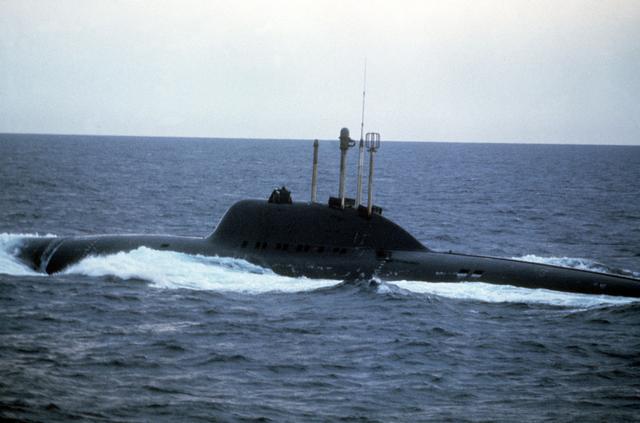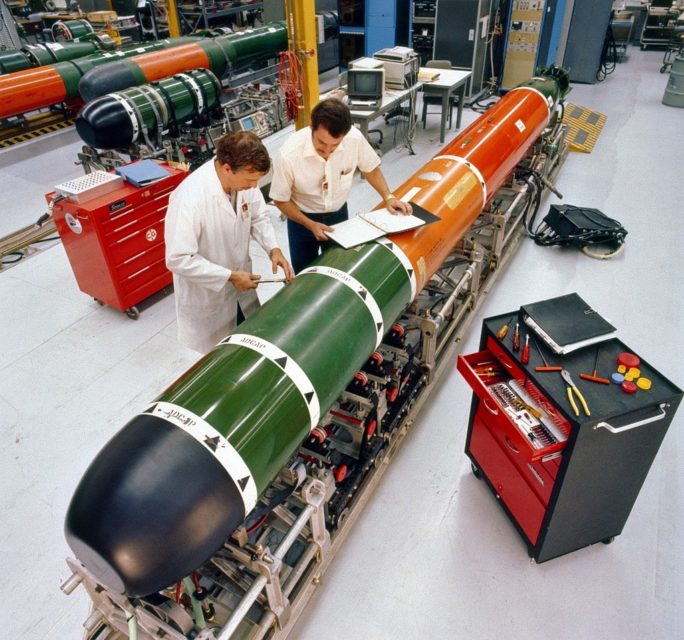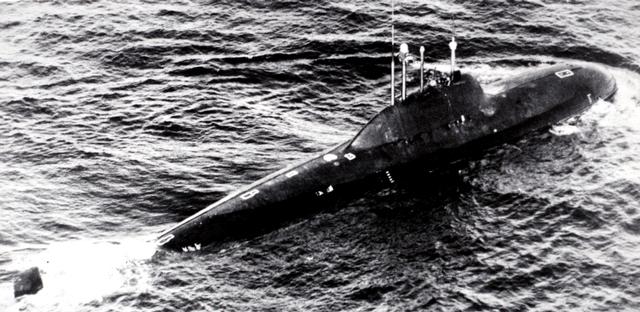In 1968 the Soviet Union produced a revolutionary new class of submarines; the Alfa-class. These vessels incorporated a number of advanced and innovative features that panicked the US. Most notably, their titanium hulls. This unconventional lightweight material made the submarines exceptionally fast – the fastest ever made. Their great hull strength also meant they could dive to much greater depths than then-contemporary submarines.
Despite being concerned about these high-speed and deep-diving submarines, the US never followed the Soviets down the titanium-hulled path.
Project 705 Lira
Technically called Project 705 Lira, the class is better known as Alfa, its NATO reporting name. These vessels were the peak of 1960s submarine technology. The class remains the fastest ever built, with a top speed of 12 km (14 mph) while surfaced and 41 knots (47 mph) while submerged. Propulsion came from an equally advanced lead-cooled fast reactor that was smaller than conventional reactors at the time, which in turn made the vessels’ overall proportions much smaller.
The only submarine faster than the Alfa-class was K-222, another Soviet design that also utilized a titanium hull. Only a single example was ever built, and it is regarded as the Alfa-class’ predecessor as it likely demonstrated many of the technologies used in the Alfa-class.
Constructing a submarine from titanium brings a number of benefits over an equivalent steel-hulled vessel. Titanium is much lighter than steel yet equally strong, making it an incredibly valuable material.
A titanium-hulled submarine can tolerate higher pressures too, allowing it to dive deeper than usual depths. Additionally, titanium is more resistant to corrosion and can make a submarine even harder to detect as it is paramagnetic.
These submarines certainly caused a stir in the west – particularly with the Americans – who feared that their existing anti-submarine weapons were useless against such a fast and deep-diving vessel.
However as with any high-performing machine using advanced materials and technologies, there is often a few big drawbacks, and the Alfa-class was no different.
Why didn’t the US try to match the Alfa-class?

The titanium hull was the secret to the Alfa-class’ success, but it was also its biggest drawback.
Titanium is exceptionally strong for its weight, but working with the metal is difficult and massively expensive. Much rarer than iron, just sourcing titanium is costly. Russia is a major supplier of titanium to nations all over the globe and has much easier access to the metal (the US had to secretly import titanium from the Soviet Union to build the SR-71 Blackbird).
Actually building the titanium hull requires special argon-infused facilities and workers who are trained to work with the metal. Bending and shaping titanium panels is difficult, and there is an uncomfortably high risk of imperfections within the metal that could result in a catastrophic failure of a submarine subject to extremely high pressures.
All of these problems culminate in a mind-bogglingly expensive production process. The previously mentioned K-222 titanium hulled submarine cost 1 percent of the Soviet Union’s entire 1968 GDP. The United States simply didn’t want to fork out the money trying to play catch-up on these supremely expensive vessels.
Instead, they invested in countermeasures to take the Alfa-class submarines down.
These weapons – like the Mark 48 Torpedo – focused on speed to ensure they could catch the titanium submarines.

This torpedo is still in service today. Thankfully the US and Soviet Union never came to blows, and therefore the US was never in a situation where they had to deal with the Alfa-class submarines’ speed.
